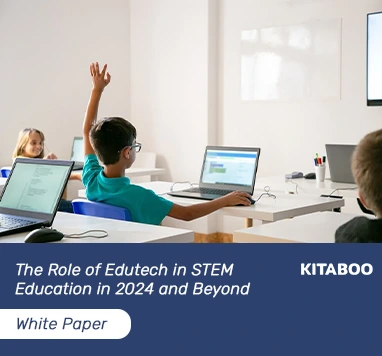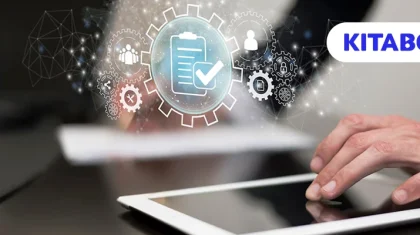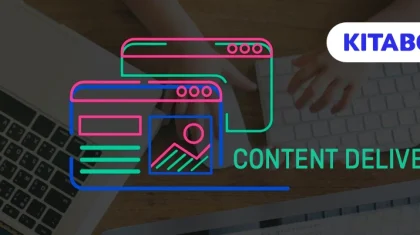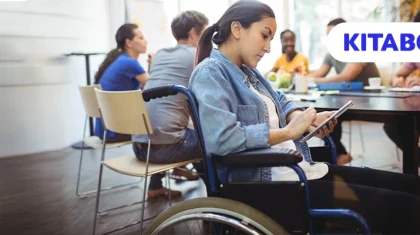
How Can eTextbooks Help K-12 Publishers, Institutes & Students
As digital technology expands its horizons, more and more educational institutes including high schools and colleges are adopting eBooks to impart knowledge. Publishers too are taking to etextbooks to meet learners’ expectations and also expand their reach through the Internet.
The increasing use of the Internet and the easy availability of smartphones have changed the way people search for, access, and consume content. The other major change is in the way that the content is presented.
Publishers can harness digital formats to present content in the form of a story which is visually and intellectually more stimulating, drawing in the learners and enabling them to learn without even realizing that the story is not just entertaining but also informative.
etextbooks help to break the monotony and make content more immersive, absorbing students into the lesson and challenging them to find solutions rather than simply receiving information, which is usually the case with print textbooks.
For example, abstract concepts in subjects such as Mathematics, Physics, and Chemistry can be concretely demonstrated using 3D diagrams, figures, animations, and VR/AR. These features help to capture and retain attention, simplify context, making learning more connected to the real-world, and therefore, more relevant to the students.
Compare this to a scenario where an instructor explains these concepts with the help of diagrams, where in most cases, students are unable to follow the instructor’s train of thought and end up with a different interpretation than intended. Lack of understanding leads to loss of interest and, consequently, lower learning outcomes. etextbooks help to address the shortfalls of print textbooks and make learning more fun, relevant and interesting.
There are several other reasons why etextbooks are becoming increasingly popular both with the students and educational institutes. So are eTextbooks the next big thing in k-12 education?
For one, these etextbooks are available online and so students can access them anytime and anywhere, either for free or based on an annual or monthly subscription. Publishers, on the other hand, can benefit by leveraging the digital space to enter new markets.
Whitepaper:
Can the Education Publishers Leverage A Subscription Model
Here are some ways etextbooks are helping K-12 publishers, institutes and students:
K-12 Publishers:
etextbooks enable publishers to expand their geographical reach. Also, by using localization services they can translate their etextbooks in several languages, further increasing their reach.
Second, reprinting paperback textbooks is an expensive option. In case of etextbooks, you just need to create a single soft copy which can be shared and downloaded by the end users. Publishers also save in terms of inventory costs, warehousing costs, and transportation costs.
It is also easier to update and edit these etextbooks; hard copies, on the other hand, have to be reprinted, adding significantly to the costs.
Besides, using the Internet and online payment options, publishers can make their etextbooks available for sale at no additional cost.
These books are also cost-effective for the publishers as they don’t have to deal with unsold inventory and besides, they also gain in terms of steady income through monthly or annual subscriptions. Here’s how how can k-12 publishers adapt in the digital era.
K-12 Students:
etextbooks enable K-12 institutes to take learning outside the walls of the traditional classroom and ensure a balance of responsibility between the teacher and students in the learning journey. With print textbooks, students depend upon the instructor to understand the lesson. However, not all students in a class have the same ability to grasp and retain which means that while some surge ahead, others lag behind.
etextbooks are a means to enable students to take greater ownership of their learning.
For example, AR-enabled etextbooks use simulated environment to make lessons more connected to reality. Most students own a smartphone and can use AR apps to view these lessons. For example, a lesson on the respiratory tract can show a 3D model of the lungs such that when the students point their app, they can see the lungs in action. Besides, external and internal links are added to the content, allowing students to search for additional information either to clarify their doubts or learn more about the subject.
It is generally observed that students are not too happy with homework. AR-enabled worksheets are a means to evoke interest and motivate students to learn by doing. Again, students have to point their apps to the AR-enabled worksheets, and they will be able to find a wealth of related information in the form of audio, video, graphics etc.
Thus, with etextbooks and worksheets, students can learn at their own pace, try their hand at various activities, and so they know what they are learning, why they are learning and how they can leverage this learning in real-world settings. Here’s more on how to use digital textbooks in the classroom.
Publishers can further enrich their etextbooks by adding social media features, thus opening windows for conversations with a wider audience. The students can debate, discuss, share knowledge and exchange views, and this leads to a greater interest and deeper connect with the subject. Students and teachers can also use these platforms to connect beyond the classroom and share notes and feedback.
etextbooks are available at a much cheaper price than print textbooks, which means they are more affordable for the students. Some publishers also offer etextbooks on rental subscription basis which makes them all the more affordable.
In fact, students can store and access a whole library of etextbooks on their tablets or smartphones and don’t have to carry around heavy bags with print books.
K-12 Institutes:
etextbooks also empower K 12 institutes at various levels. For one, instructors are relieved from the task of creating their own teaching resources since they can access a wealth of teaching aids on the Internet. Therefore, they have more time at hand for constructive interaction with the students.
The institutes can take a blended approach to learning. A blended approach is a combination of traditional learning and online learning. While online resources allow students to learn at their own pace, and revisit concepts again and again till they master them, the traditional approach provides them the opportunity to interact and engage with their instructor and peers. Needless to say, etextbooks are crucial to online education and therefore support blended learning. Can technology in the classroom replace expensive textbooks?
More and more K-12 schools and higher institutions are now using digital technology to provide distant or remote learning to students who cannot be physically present in school.
Traditionally, this was done through correspondence courses which have now been replaced by online courses. These courses can be instructor-led or web-based courses, and are delivered using etextbooks, other online resources and communication technologies that allow for large-scale interactive participation. These courses open up additional source of revenue for these institutes, allowing them to reach a worldwide audience.
Discover how a mobile-first training platform can help your organization.
Kitaboo is a cloud-based platform to create, deliver & track mobile-first interactive training content.






